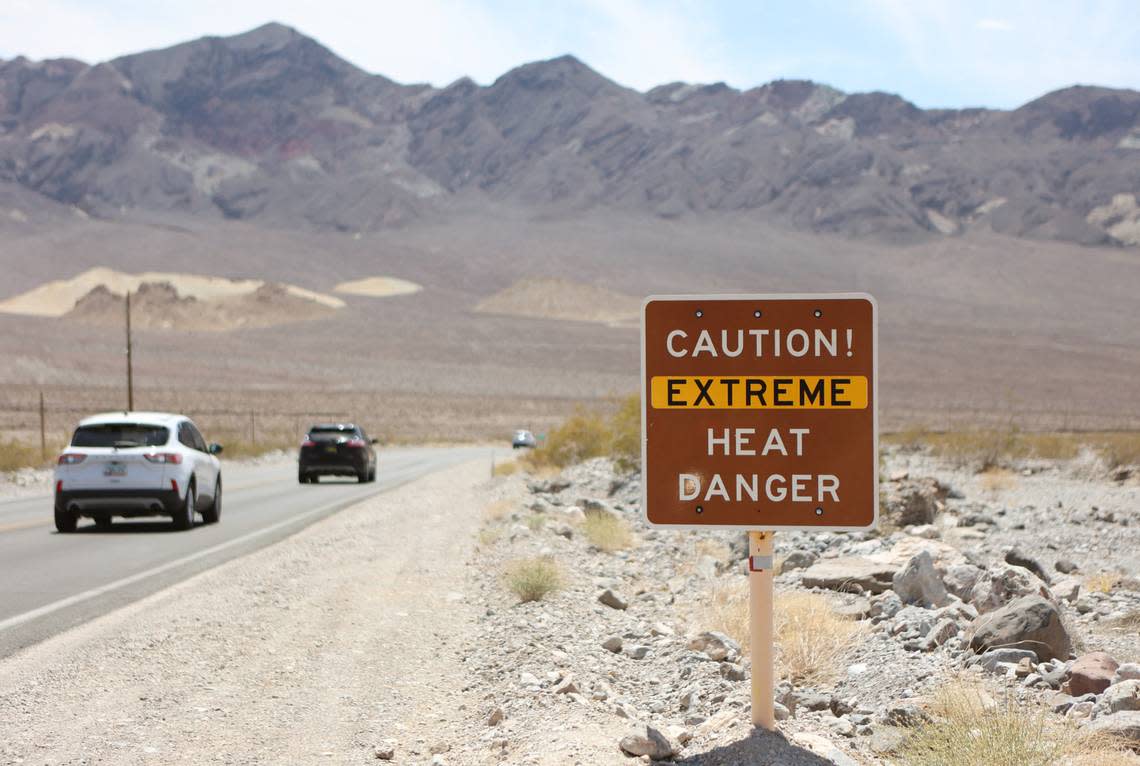Hot enough for you? Climate change is making daily life more unbearable | Opinion

Boise could set yet another weather record in the coming weeks: most consecutive days of 100-degree days.
That’s nothing.
In Death Valley, temperatures hit 116 degrees — at night. It was 128 degrees during the day.
The effects of global warming are ramping up, and this year seems to be sending the message that the earth, because of climate change, is becoming inhospitable. Some places are becoming uninhabitable.
Downtown Montpelier, the capital of Vermont, has been hit with floods that have damaged thousands of homes and businesses.
The city had a record-setting 5.28 inches of rainfall in one day, according to the National Weather Service. That’s more than any other day on record – including, even, when Hurricane Irene dropped 5.27 inches of rain there in 2011, according to CNN.
Flash flooding in Pennsylvania has killed at least six people, cut power to thousands, canceled flights and left untold damage in its wake.
Similar historic floods have been seen in South America, Canada and across Europe and Asia this year.
Meanwhile, wildfire smoke from Canada has choked cities from Chicago to New York, casting some cities in an apocalyptic orange glow.
A heat wave in much of the United States has been going on for more than a month and is expected to last into August. More than 2,300 heat records have fallen from Florida to California, according to CNN.
While Boise could hit 13 consecutive days of 100-plus degrees, Phoenix hit 110 degrees for 19 straight days, and the city set a new all-time record for highest low temperature of 97 degrees, according to CNN. That led to 12 confirmed and 55 suspected heat-related deaths in Phoenix’s Maricopa County in the first week of July, according to the Maricopa County Department of Public Health.
Power grids are straining under the increased electricity use from air conditioners. Texas and Phoenix broke electricity use records, and the state of California has asked residents to set their thermostats at 78 degrees to avoid grid failures.
If the grid were to fail in Phoenix, half of the city’s 1.6 million people would need medical attention, and more than 13,000 people would die, according to a recent study highlighted in Wired magazine.
Unusually hot summer days have become more common, according to the U.S. Environmental Protection Agency, and hot summer nights are increasing at an even faster rate. Heat waves with hot nights are especially dangerous, according to the EPA, because they give people less opportunity to cool off and recover from daytime heat.
During the last decade, there were an estimated 12,000 premature heat-related deaths annually in the contiguous United States, according to one study.
The EPA has noted that plants are sprouting leaves and flowers earlier than usual in many parts of the country, a change from the historical norm consistent with regional temperature changes.
The oceans have been getting warmer since 1955, according to the EPA, which is affecting weather patterns, marine life and coastal communities.
In Idaho, it’s not a matter of if we’ll be hit with a bad wildfire season, it’s a matter of when.
Drought conditions in North Idaho and warmer than normal temperatures across the state means most of North Idaho and southwest Idaho is at elevated risk for wildfire through September, according to Idaho Department of Lands Director Dustin Miller, as reported by the Idaho Capital Sun.
These are not abstract concepts, like melting arctic sea ice, increased greenhouse gasses or incremental increases in global sea levels.
What we’re starting to see impacts our ability to live on the planet. We’ve always known that it’s an existential threat; now we’re seeing it come to fruition.
Ridiculous fights over library books, Hunter Biden’s laptop, whether to drink Bud Light or whether M&Ms are “woke” should seem inconsequential compared with the real threats posed by climate change.
We are like the proverbial frogs in a pot of water, and things are starting to boil.
Statesman editorials are the unsigned opinion of the Idaho Statesman’s editorial board. Board members are opinion editor Scott McIntosh, opinion writer Bryan Clark, editor Chadd Cripe, newsroom editors Dana Oland and Jim Keyser and community member Mary Rohlfing.

